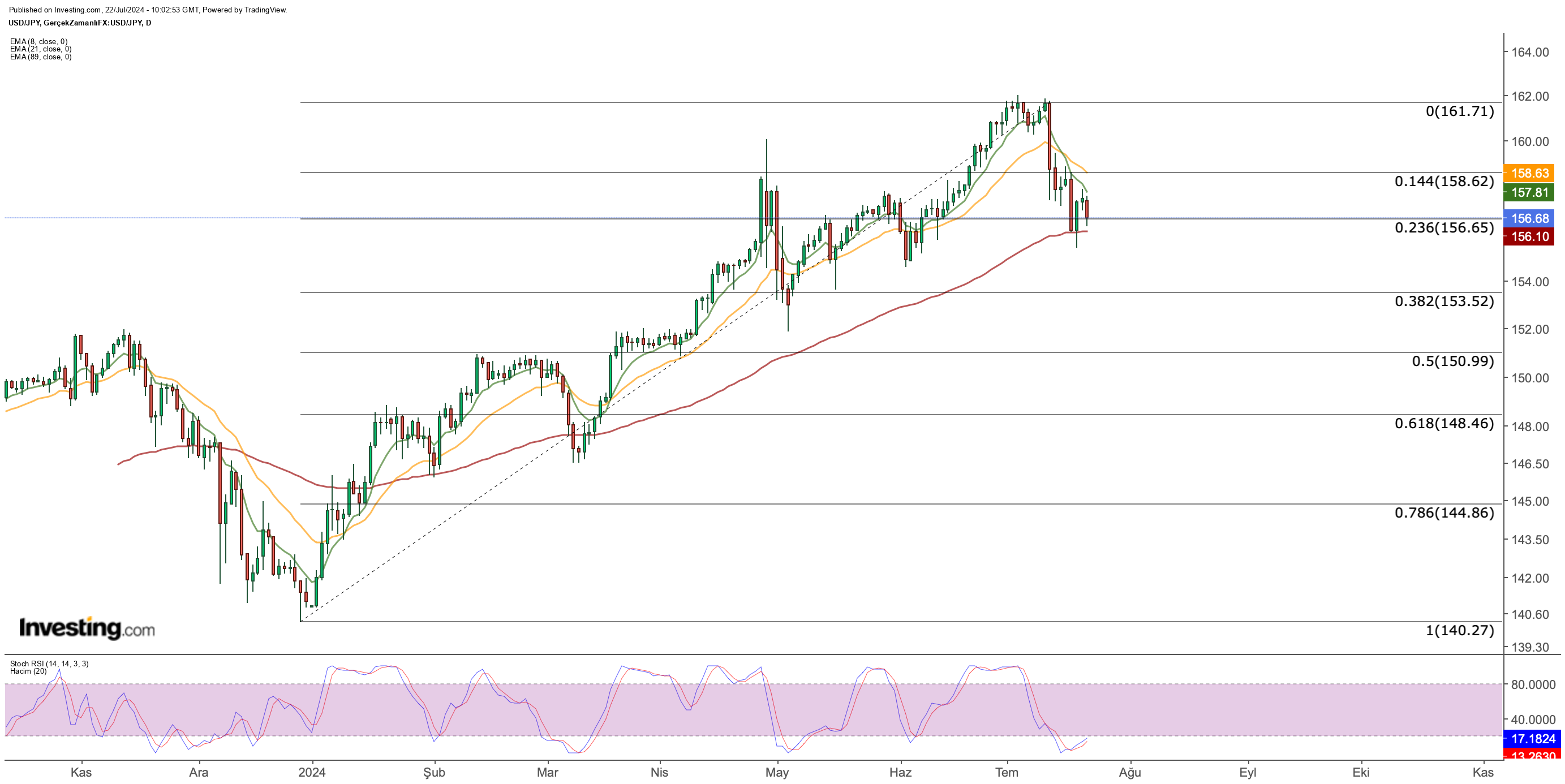- The US dollar dipped after Biden dropped out of the re-election race.
- This political shift has increased market uncertainty, affecting the US dollar and boosting safe-haven assets like gold.
- In this piece, we analyze the implications for the US dollar and other major currencies ahead of the elections.
- Unlock AI-powered Stock Picks for Under $8/Month: Summer Sale Starts Now!
On Sunday, US President Joe Biden announced his withdrawal from the presidential race, throwing his support behind likely Democratic nominee and Vice President Kamala Harris for the November elections.
While Harris enjoys considerable support within the party, the silence from some high-profile Democrats has raised questions and slightly increased market uncertainty. Additionally, while Donald Trump's chances of defeating Biden seemed high, Harris's candidacy introduces new uncertainties.
This uncertainty caused the US dollar to start the week with a slight decline against six major currencies. Meanwhile, the safe-haven asset gold slowed its downward trend over the past three business days.
The Japanese yen continued to appreciate against the dollar, driven by high expectations for a Fed rate cut in September and the increasing likelihood that the BOJ will soon adopt a tighter monetary policy.
Keeping all that in mind, let's analyze what the future holds for the greenback amid the political uncertainty brewing ahead of the US presidential elections.
Dollar Index Reflects Uncertainty Over Presidential Race
As Biden's withdrawal from the presidential race shakes up the political landscape, all eyes are on this week's poll results. The dollar index has already seen a slight dip, reflecting the market's uncertainty. However, it's still too early to predict the full impact of this development.
With Kamala Harris likely to face Trump, the dollar's weakness may persist if polls indicate a lower chance of Trump's election. Trump is known for supporting strong dollar policies, which could buoy the currency if he is elected.

The Dolar Index (DXY) started the week with a slight decline, hovering around 104.2. Last week, the DXY dipped to 103 as expectations for a Fed interest rate cut increased, but found support from Fed members' comments and closed at 104.
Currently, the 104 level acts as the nearest support for the DXY. While the overall outlook remains bearish, daily closes above 104.5 could signal a strengthening dollar. Surpassing 104.8 would indicate a short-term positive trend.
If the DXY fails to stay above 104.5 this week, further downward pressure could drive it towards the 102.8-103.5 range. Key factors influencing the dollar's value this week include poll results after the candidate change and economic data releases such as Services PMI, New Home Sales, and Q2 growth figures. On Friday, the US Personal Consumption Expenditures Price Index, a significant inflation indicator, could impact the dollar market.
Midweek, the influx of data may complicate market direction, suggesting the DXY might hover around the 104 level throughout the week.
Gold to Continue Uptrend?
Gold hit a record high of $2,451 in mid-July, driven by expectations of the US Federal Reserve's loose monetary policy in the final quarter. However, statements from Fed members last week caused gold to retreat from its peak.
In the past three days, gold has dipped below $2,400 but began the week with a decelerated decline due to uncertainty following President Biden's recent actions. Early in the week, investors flocked to gold, helping it stay resilient near the critical support level.

The US presidency and the Fed's interest rate policy continue to dominate the market narrative. These developments are likely to support gold prices in the near term. As long as gold remains above the $2,390 support level, it could continue its upward trajectory this week.
Resistance Levels to Watch:
The first resistance point is $2,420. If gold surpasses this level, the next resistance is $2,450. Breaking past this range could propel gold towards the $2,490-$2,550 target zone, based on Fibonacci levels. For this upward move to solidify, gold needs to maintain daily closures above $2,400.
Additionally, if upcoming US economic data supports a Fed interest rate cut, gold's upward momentum could accelerate.
Japanese Yen Gains Value with BOJ Expectations
Dolar/yencontinues to decline amid expectations of policy changes by the Fed towards easing and the BOJ towards tightening amid the latest uncertainty over the US elections.
USD/JPY started the week lower at 157.43 and eased to 156.28 in the early hours of the day. While the downtrend in USD/JPY started from the 161 region, where historical highs were seen, the trend remains bearish despite last week's partial dollar rally.

The Japanese yen has gained value as investors anticipate policy changes from both the Federal Reserve and the Bank of Japan, driven by uncertainty surrounding the US elections.
USD/JPY began the week at 157.43 and fell to 156.28 early in the day. Although the pair's downtrend started from the 161 region, where it reached historical highs, the bearish trend persists despite last week's brief dollar rally.
***
This summer, get exclusive discounts on our subscriptions, including annual plans for less than $8 a month!
Tired of watching the big players rake in profits while you're left on the sidelines?
InvestingPro's revolutionary AI tool, ProPicks, puts the power of Wall Street's secret weapon - AI-powered stock selection - at YOUR fingertips!
Don't miss this limited-time offer.
Subscribe to InvestingPro today and take your investing game to the next level!

Disclaimer: This article is written for informational purposes only; it does not constitute a solicitation, offer, advice, counsel or recommendation to invest as such it is not intended to incentivize the purchase of assets in any way. I would like to remind you that any type of asset, is evaluated from multiple perspectives and is highly risky and therefore, any investment decision and the associated risk remains with the investor.
